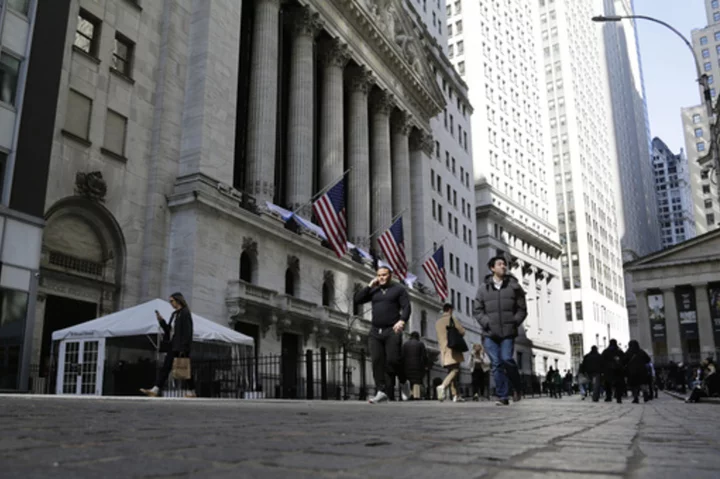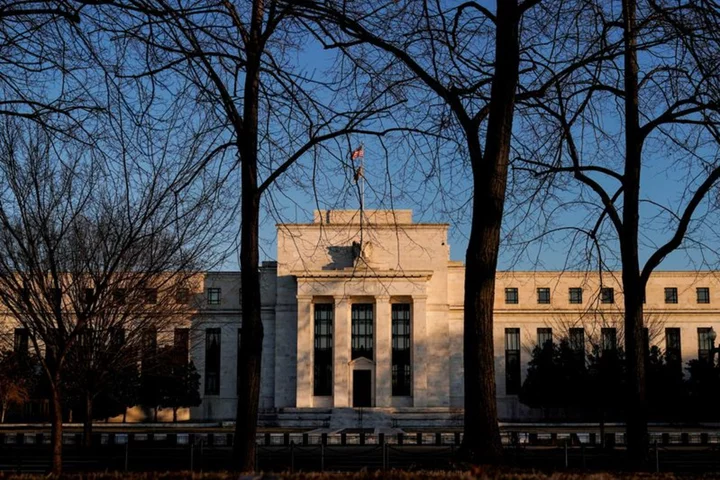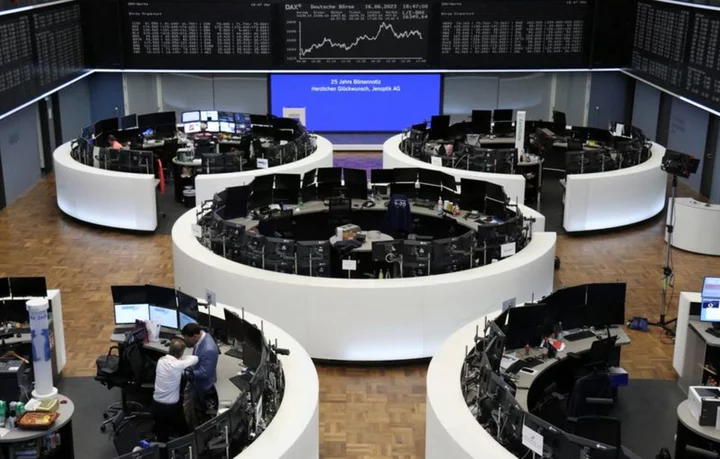NEW YORK (AP) — Wall Street is mixed on Wednesday after a report showed inflation is making strides toward easing, even if it remains too high.
The S&P 500 was little changed in morning trading after giving up most of an earlier gain. The Dow Jones Industrial Average was down by 135 points, or 0.4%, at 33,433, as of 10:47 a.m. Eastern time, while the Nasdaq composite was 0.5% higher.
Bond prices climbed after the highly anticipated report said inflation at the consumer level was 4.9% last month, down from 5% in March and the lowest level in two years. That was slightly better than economists expected, and other underlying measures of inflation also came in very close to forecasts.
Because the inflation data came in roughly as expected, Wall Street sees the door still open for the Federal Reserve to leave interest rates alone at its next meeting in June. That would be the first time it hasn’t raised rates at a meeting in more than a year, and a pause would offer some breathing room for the economy and financial markets.
The Fed has jacked up rates at a furious pace in hopes of driving down inflation. But high rates do that by slowing the entire economy and hitting investment prices broadly. They’ve already sent stock prices tumbling, caused turmoil in the banking system and dragged on the economy enough that many investors expect a recession to hit this year.
If the inflation reading had come in hotter than expected, it likely would have spooked Wall Street because it would have raised the likelihood for more rate hikes.
“Inflation is still too hot, but at least it’s cooling,” said Brian Jacobsen, chief economist at Annex Wealth Management. “The Fed has pushed rates to be restrictive enough that inflation can slowly deflate.”
Traders immediately upped the probability they see of the Fed holding rates steady in June to nearly 89% from 79% a day before, according to data from CME Group.
Stocks that benefit the most from an easing of interest rates were leading the way on Wall Street, including Big Tech and other high-growth stocks. Amazon's 2.7% rise and Alphabet's 1.2% climb were two of the biggest forces pushing the S&P 500 higher.
Some banks also got a lift. High rates have caused cracks in the banking system in part by knocking down the prices of bonds they bought when rates were low. Higher rates available in money market funds are also pulling customers' deposits away from banks.
Three high-profile U.S. bank failures since March have had Wall Street on the hunt for the next weak link, causing stocks of several smaller and mid-sized banks to tumble. Some under the most scrutiny rose Wednesday. Western Alliance Bancorp added 0.4%. PacWest Bancorp was flat after giving up a gain from earlier in the morning.
Of course, other economic reports will arrive before the Fed’s next meeting, which runs from June 13 to June 14, that will sway its decision. One will hit Thursday, showing how inflation fared at the wholesale level.
In the meantime, inflation still remains way above the Fed's 2% target and continues to squeeze households across the economy, particularly those with the lowest incomes.
On the losing end of Wall Street was Lincoln Financial, which fell 8.1% after reporting weaker profit for the latest quarter than expected.
Airbnb dropped 10.9% despite reporting profit that matched analysts' forecasts. It gave financial forecasts for the current quarter that were weaker than some on Wall Street expected.
The majority of companies in the S&P 500 have topped profit forecasts so far this reporting season, which is approaching its final stretch. But they're still on pace to report an overall drop in earnings from a year earlier, which would be the second straight quarter that's happened.
In the bond market, increased hopes for a coming pause from the Fed on rates pushed yields lower.
The yield on the 10-year Treasury fell to 3.45% from 3.52%. It helps set rates for mortgages and other important loans. The two-year Treasury yield, which moves more on expectations for Fed action, fell to 3.95% from 4.03%.
Besides worries about interest rates and inflation, some corners of the bond market are also swinging on concerns about the U.S. government inching closer to a possible default on its debt. That's never happened before, and economists warn a default could be catastrophic for the economy and financial markets.
The widespread expectation is that Congress will come to a deal before the June 1 deadline that many on Wall Street have circled, simply because the alternative would be so painful for everyone. But a meeting in the White House on Tuesday between political leaders yielded no breakthrough, and sniping continues between them.
___
AP Business Writer Yuri Kageyama contributed from Toyo.









